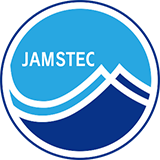Construction 2
-
- Hull blocks of the under-construction Arctic Research Vessel "Mirai II" , April 2024.
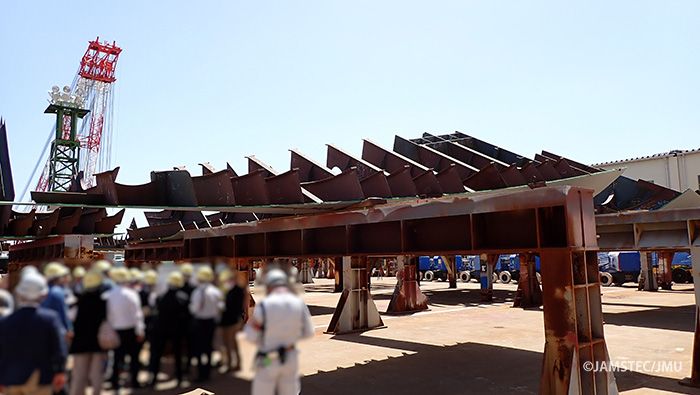
-
- Hull blocks of the under-construction Arctic Research Vessel "Mirai II" , April 2024.
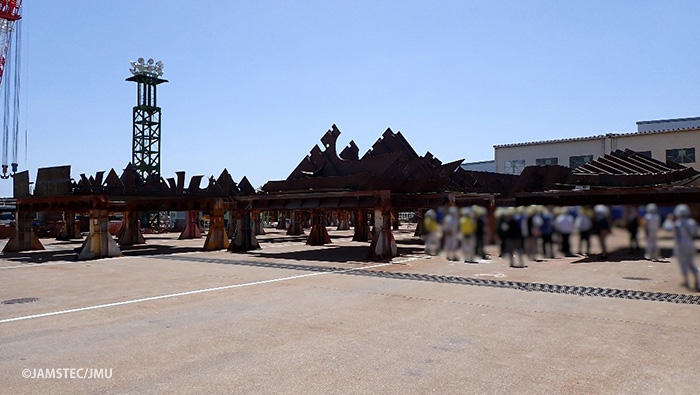
-
- Hull blocks of the under-construction Arctic Research Vessel "Mirai II" , April 2024.
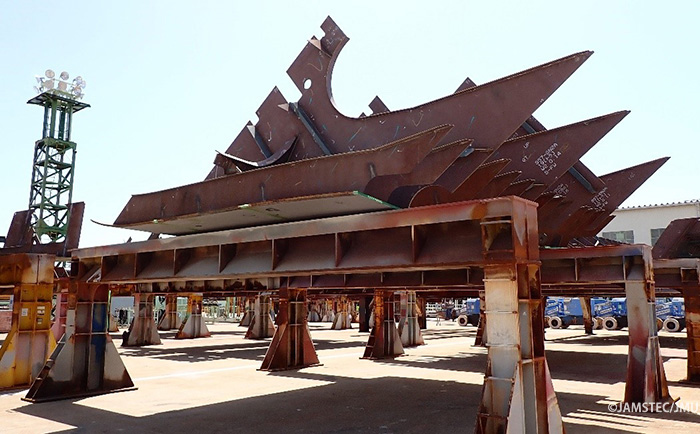
-
- Hull blocks of the under-construction Arctic Research Vessel "Mirai II" , April 2024.
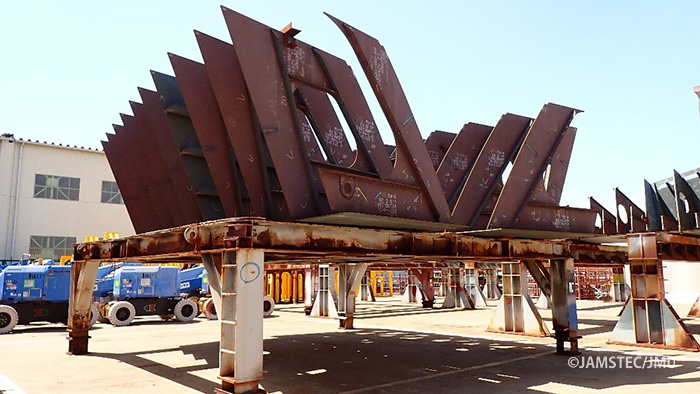
-
- Hull blocks of the under-construction Arctic Research Vessel "Mirai II" , April 2024.
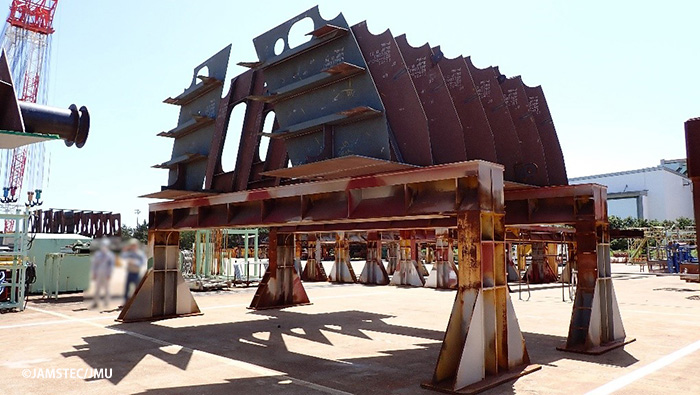
-
- Hull blocks of the under-construction Arctic Research Vessel "Mirai II" , April 2024.
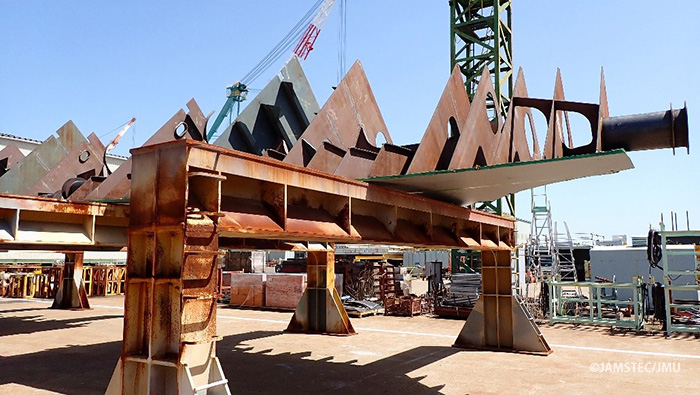
-
- Hull blocks of the under-construction Arctic Research Vessel "Mirai II" , April 2024.
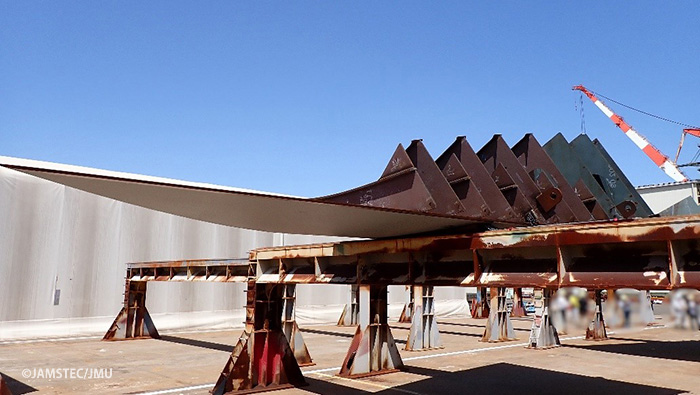
-
- Hull blocks of the under-construction Arctic Research Vessel "Mirai II" , April 2024.
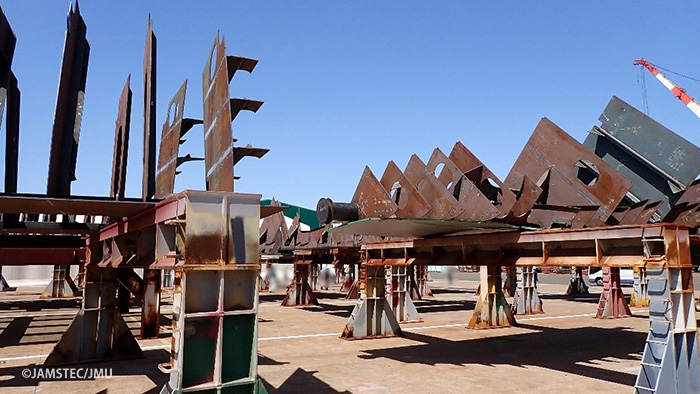
-
- 16V28AHX Main engine trial operation Part 1
-
Engine starting test
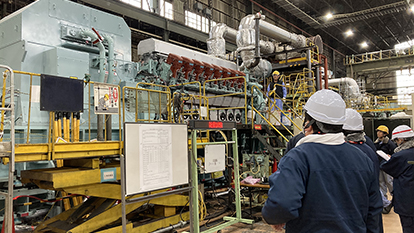
-
- 16V28AHX Main engine trial operation Part 2
-
100% Load test
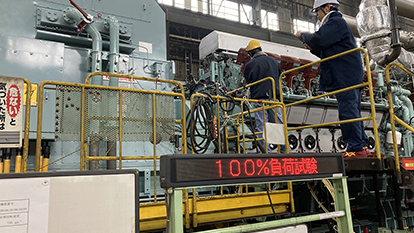
-
- 16V28AHX Main engine trial operation Part 3
-
Bearing temperature measurement
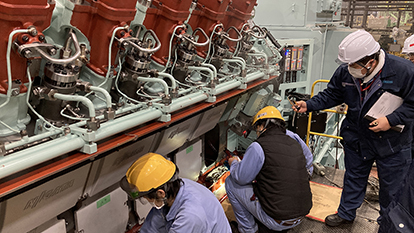
-
- 16V28AHX Main engine trial operation Part 4
-
Protective device test
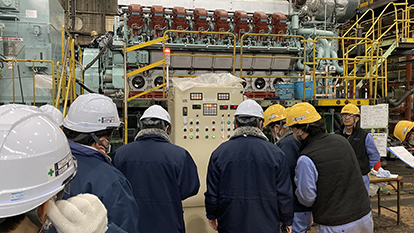
-
- 16V28AHX Main engine trial operation Part 5
-
Open inspection
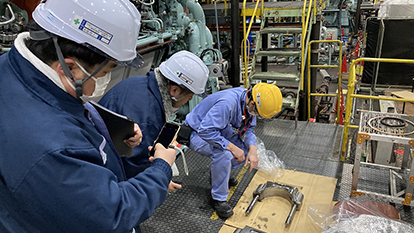
-
- Main engine Dual-fuel diesel (DFD) manufacturing Part 4
-
9L28AHX-DF Commissioning is underway toward the trial operation at the works.
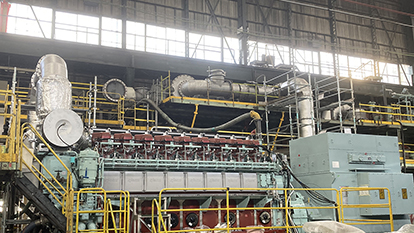
-
- Main engine manufacturing Part 3
-
16V28AHX Commissioning is underway toward the trial operation at the works.
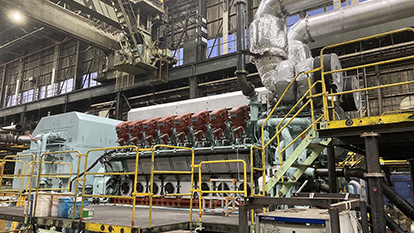
-
- Steel delivery for Arctic Research Vessel Part 1
-
Steel materials for Arctic research vessel delivered to JMU`s Isogo Works. The design phase has been completed, and construction(manufacturing and assembling) will finally begin in preparation for the launch in March 2025.
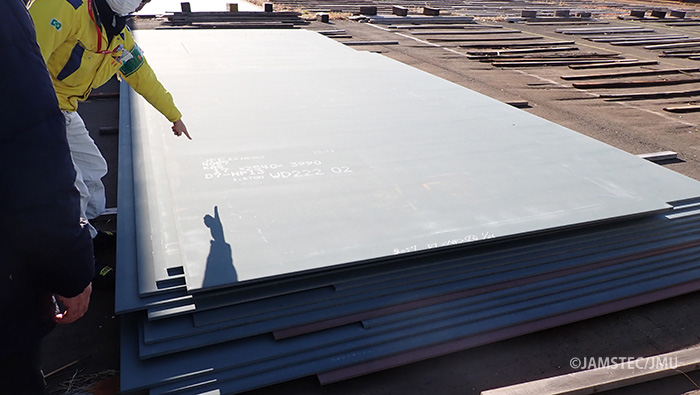
-
- Steel delivery for Arctic Research Vessel Part 2
-
Steel materials for Arctic research vessel delivered to JMU`s Isogo Works. The design phase has been completed, and construction(manufacturing and assembling) will finally begin in preparation for the launch in March 2025.
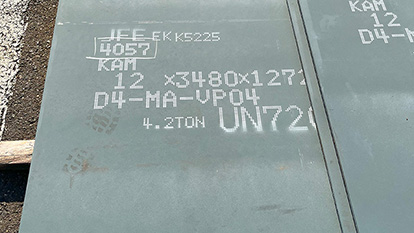
-
- Steel delivery for Arctic Research Vessel Part 3
-
Steel materials for Arctic research vessel delivered to JMU`s Isogo Works. The design phase has been completed, and construction(manufacturing and assembling) will finally begin in preparation for the launch in March 2025.
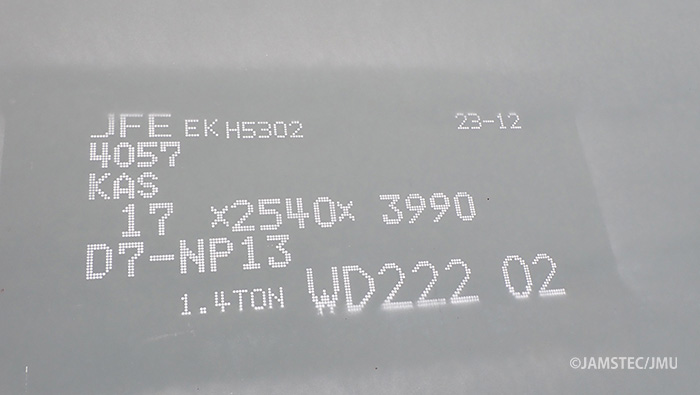
-
- Main engine manufacturing Part 2-1
-
16V28AHX The engine unit of Unit 1 is completed (Part of the body is painted with primer. Finish painting will be done in the final process.)
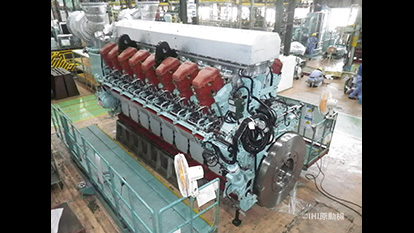
-
- Main engine manufacturing Part 2-2
-
16V28AHX The generator has been coupled with the Unit 1 engine on the common bed
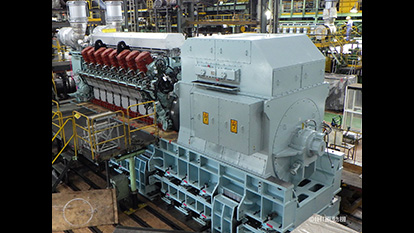
-
- Main engine Dual-fuel diesel (DFD) manufacturing Part 3-1
-
9L28AHX-DF The engine unit is completed
*New icebreaker partially adopts the DFD generator powered by LNG (Liquefied Natural Gas).
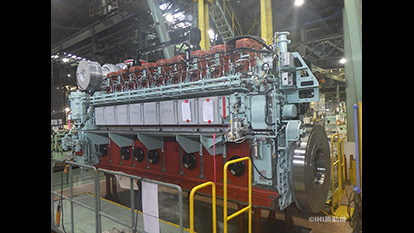
-
- Main engine Dual-fuel diesel (DFD) manufacturing Part 3-2
-
9L28AHX-DF Installing the engine unit onto the common bed
*New icebreaker partially adopts the DFD generator powered by LNG (Liquefied Natural Gas).
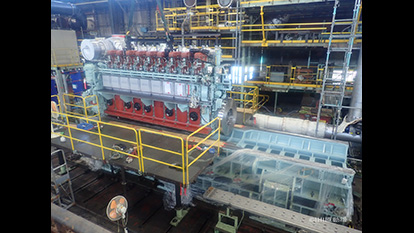
-
- Main engine Dual-fuel diesel (DFD) manufacturing Part 3-3
-
9L28AHX-DF The generator has been coupled with the engine unit on the common bed
*New icebreaker partially adopts the DFD generator powered by LNG (Liquefied Natural Gas).
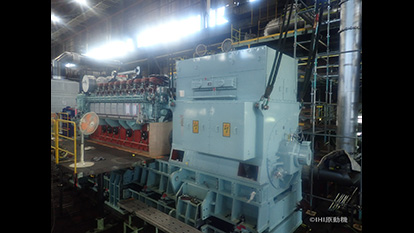
-
- Main engine Dual-fuel diesel (DFD) manufacturing Part 2-1
-
9L28AHX-DF Installing the crankshaft into the inverted crankcase
*New icebreaker partially adopts the DFD generator powered by LNG (Liquefied Natural Gas).
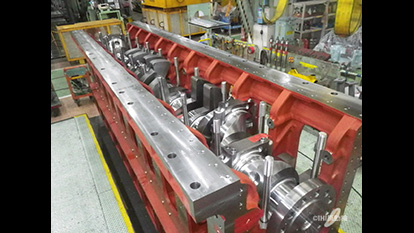
-
- Main engine Dual-fuel diesel (DFD) manufacturing Part 2-2
-
9L28AHX-DF Completed installment of the crankshaft into the crankcase
*New icebreaker partially adopts the DFD generator powered by LNG (Liquefied Natural Gas).
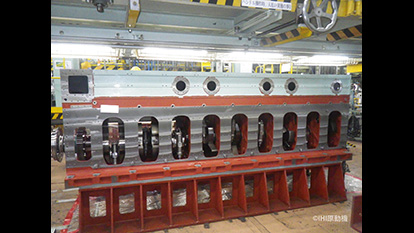
-
- Main engine Dual-fuel diesel (DFD) manufacturing Part 2-3
-
9L28AHX-DF Installing the cylinder head into the crankcase
*New icebreaker partially adopts the DFD generator powered by LNG (Liquefied Natural Gas).
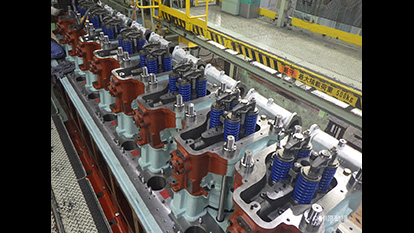
-
- Main engine Dual-fuel diesel (DFD) manufacturing Part 2-4
-
9L28AHX-DF Installing pistons into the crankcase
*New icebreaker partially adopts the DFD generator powered by LNG (Liquefied Natural Gas).
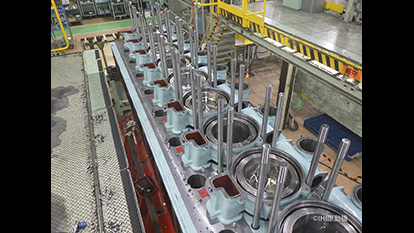
-
- Main engine manufacturing Part 1-1
-
16V28AHX type cylinder head installation 1
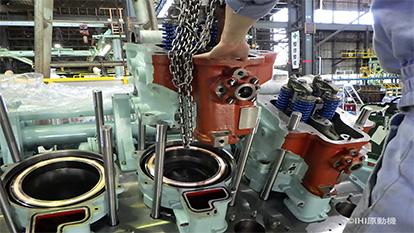
-
- Main engine manufacturing Part 1-2
-
16V28AHX type cylinder head installation 2
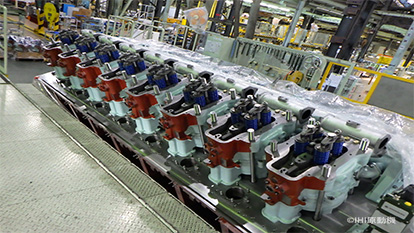
-
- Main engine manufacturing Part 1-3
-
16V28AHX type piston installation
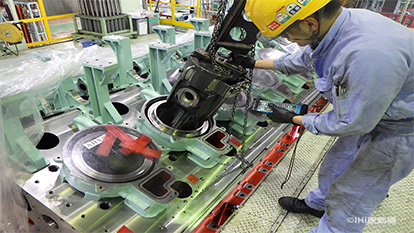
-
- Main engine manufacturing Part 1-4
-
16V28AHX type crankshaft installation
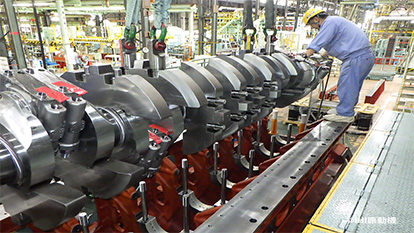
-
- Main engine Dual-fuel diesel (DFD) manufacturing Part 1-1
-
9L28AHX-DF type cylinder block processing
*New icebreaker partially adopts the DFD generator powered by LNG (Liquefied Natural Gas).
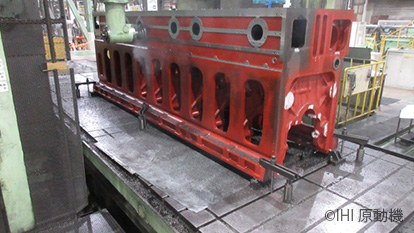
-
- Main engine Dual-fuel diesel (DFD) manufacturing Part 1-2
-
9L28AHX-DF type cylinder block processing
*New icebreaker partially adopts the DFD generator powered by LNG (Liquefied Natural Gas).
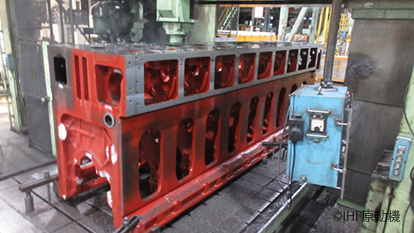
-
- Main engine Dual-fuel diesel (DFD) manufacturing Part 1-3
-
9L28AHX-DF type cylinder block processing
*New icebreaker partially adopts the DFD generator powered by LNG (Liquefied Natural Gas).
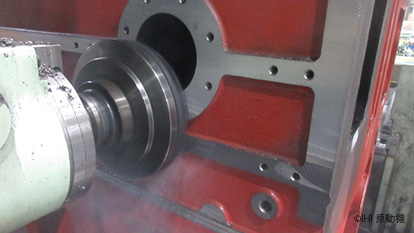
-
- Model propellers cavitation test (Same shapes as adopted in the ship)
-
Normal blade angle(Blade angle for open-waters), at a speed of 9 kt
What is a propeller cavitation test?
A test in which a propeller is rotated in a circulating water tank simulating the actual fluid field to observe the occurrence of cavitation phenomena and to estimate its adverse effects. The observation and measurement can help predict propeller damage and improve propeller shape.
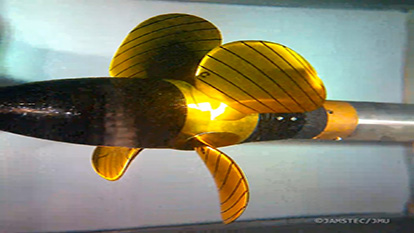
-
- Model propellers cavitation test (Same shapes as adopted in the ship)
-
Normal blade angle(Blade angle for open-waters), at a speed of 9 kt
What is a propeller cavitation test?
A test in which a propeller is rotated in a circulating water tank simulating the actual fluid field to observe the occurrence of cavitation phenomena and to estimate its adverse effects. The observation and measurement can help predict propeller damage and improve propeller shape.
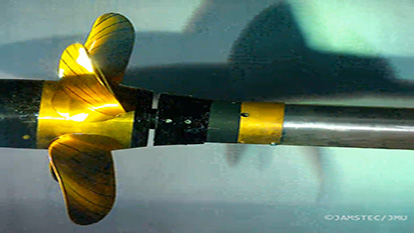
-
- Model propellers cavitation test (Same shapes as adopted in the ship)
-
Normal blade angle(Blade angle for open-waters), at a speed of 12 kt
What is a propeller cavitation test?
A test in which a propeller is rotated in a circulating water tank simulating the actual fluid field to observe the occurrence of cavitation phenomena and to estimate its adverse effects. The observation and measurement can help predict propeller damage and improve propeller shape.
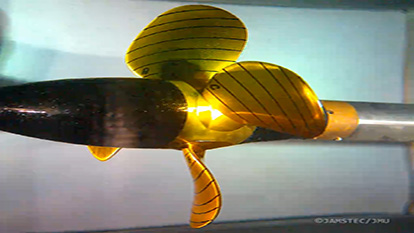
-
- Model propellers cavitation test (Same shapes as adopted in the ship)
-
Normal blade angle(Blade angle for open-waters), at a speed of 12 kt
What is a propeller cavitation test?
A test in which a propeller is rotated in a circulating water tank simulating the actual fluid field to observe the occurrence of cavitation phenomena and to estimate its adverse effects. The observation and measurement can help predict propeller damage and improve propeller shape.
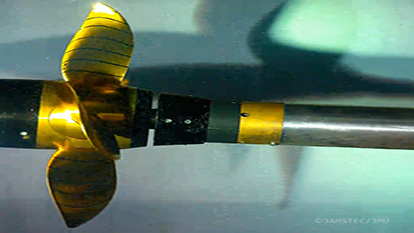
-
- Model propellers cavitation test (Same shapes as adopted in the ship)
-
Normal blade angle(Blade angle for open-waters), with MCO (Maximum Continuous Output)
What is a propeller cavitation test?
A test in which a propeller is rotated in a circulating water tank simulating the actual fluid field to observe the occurrence of cavitation phenomena and to estimate its adverse effects. The observation and measurement can help predict propeller damage and improve propeller shape.
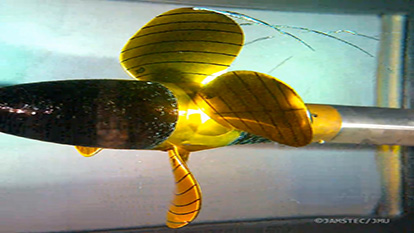
-
- Model propellers cavitation test (Same shapes as adopted in the ship)
-
Normal blade angle(Blade angle for open-waters), with MCO (Maximum Continuous Output)
What is a propeller cavitation test?
A test in which a propeller is rotated in a circulating water tank simulating the actual fluid field to observe the occurrence of cavitation phenomena and to estimate its adverse effects. The observation and measurement can help predict propeller damage and improve propeller shape.
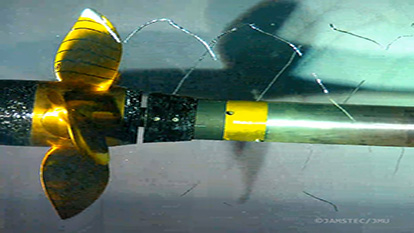
-
- Model propellers cavitation test (Same shapes as adopted in the ship)
-
Blade angle for ice-covered waters, during the continuous ice-breaking state in 1.2m thick level ice at 3kt
What is a propeller cavitation test?
A test in which a propeller is rotated in a circulating water tank simulating the actual fluid field to observe the occurrence of cavitation phenomena and to estimate its adverse effects. The observation and measurement can help predict propeller damage and improve propeller shape.
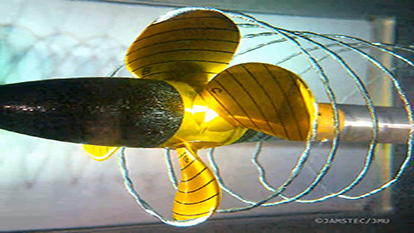
-
- Model propellers cavitation test (Same shapes as adopted in the ship)
-
Blade angle for ice-covered waters, in the bollard pull condition (Activating propellers while the ship is static)
What is a propeller cavitation test?
A test in which a propeller is rotated in a circulating water tank simulating the actual fluid field to observe the occurrence of cavitation phenomena and to estimate its adverse effects. The observation and measurement can help predict propeller damage and improve propeller shape.
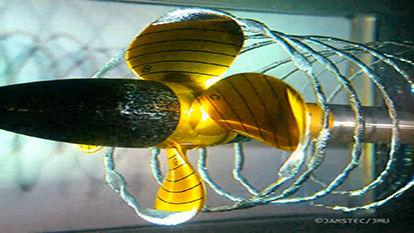
-
- Model propellers cavitation test (Same shapes as adopted in the ship)
-
Blade angle for ice-covered waters, in the bollard pull condition (Activating propellers while the ship is static)
What is a propeller cavitation test?
A test in which a propeller is rotated in a circulating water tank simulating the actual fluid field to observe the occurrence of cavitation phenomena and to estimate its adverse effects. The observation and measurement can help predict propeller damage and improve propeller shape.
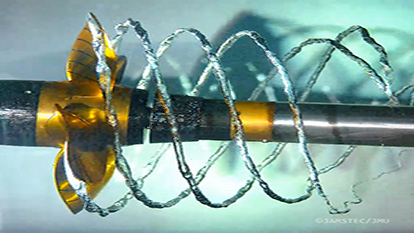
-
- Steel Cutting Ceremony
-
JAMSTEC and JMU(shipyard) representatives press the button to activate the automatic welding machine at the same time.
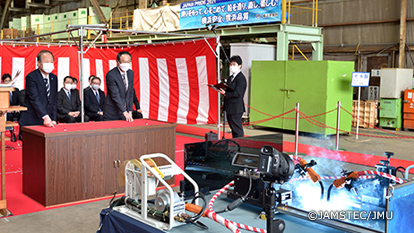
-
- Norito (Japanese Shinto prayers)
-
Prayer for safety of construction work by the chief priest of Shinto
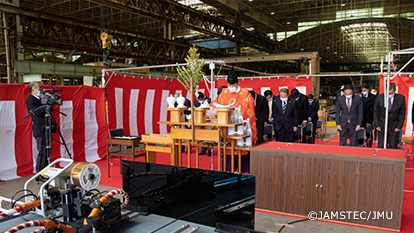
-
- Resistance-test in still water (Side)
-
Ship speed: 11.9kt
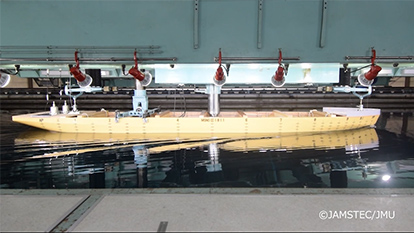
-
- Resistance test in level ice (Above the waterline)
-
Ice thickness: 1.2m, Ship Speed: 3kt
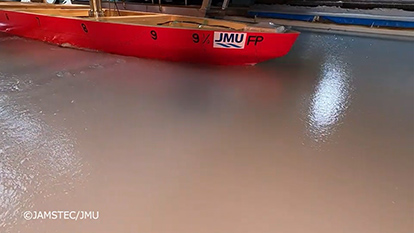
-
- Resistance test in level ice(Bottom)
-
Ice thickness: 1.2m, Ship Speed: 3kt
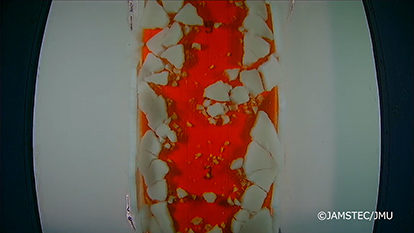
-
- Resistance test in level ice(Side)
-
Ice thickness: 1.2m, Ship Speed: 3kt
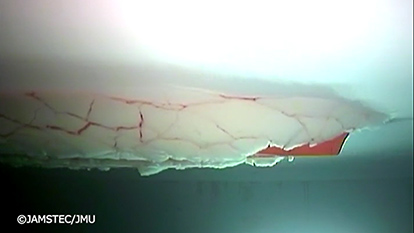
-
- Self propulsion test in level ice (Bottom)
-
Ice thickness: 1.2m, Ship Speed: 3kt
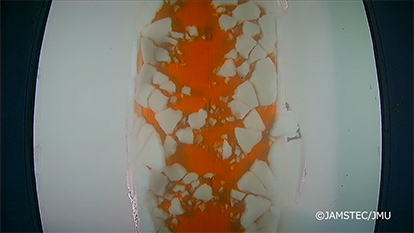
-
- Resistance test in pack ice condition (Landscape)
-
Ice floe length: 17.5m, Ice concentration: 60%, Ship speed: 4kt
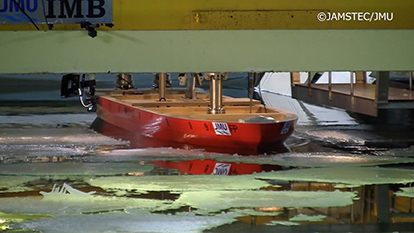
-
- Ramming test in thick level ice (Landscape)
-
Ice thickness:1.4m, Indentation speed: 7kt
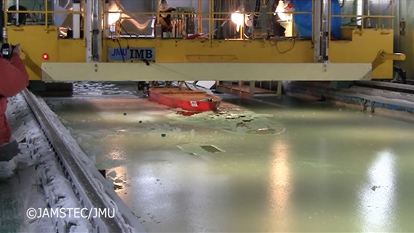
-
- Initial turning test in level ice (Landscape)
-
Ice thickness:0.8m, Ship Speed: 4.7kt
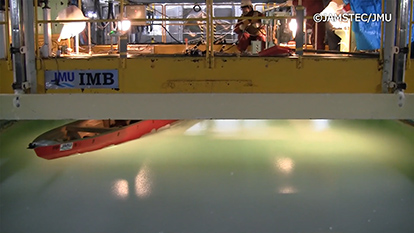
-
- Initial turning test in level ice(Bottom)
-
Ice thickness:0.8m, Ship Speed: 4.7kt
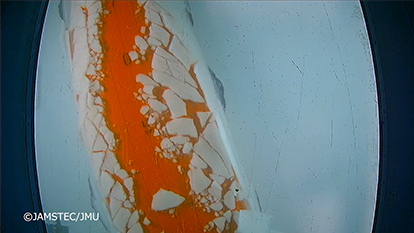
-
- Steady circular test - measurement of rudder force and propeller thrust (Landscape)
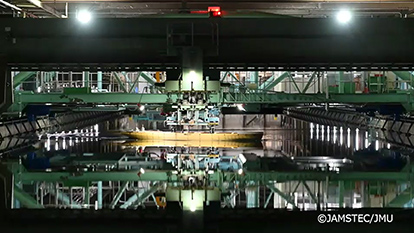
-
- PMM (Planar Motion Mechanism) test - measurement of hydrodynamic forces on the manoeuvring ship (Landscape)
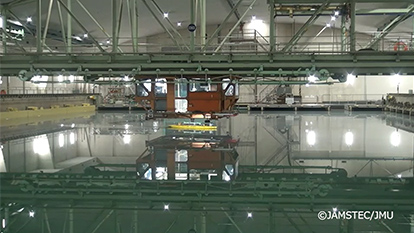
-
- Pivot-turning test - measurement of turning resistance forces (Landscape)
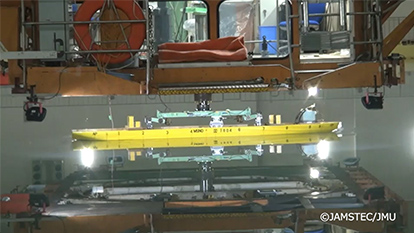
-
- Roll motion test in regular beam wave without ART
-
Wave height: 1m, Ship speed: 12kt
Anti-Rolling Tank (ART)
A closed half-filled water tank placed in the ship's superstructure to reduce roll motion. The water in the tank moves left and right acting like a counterweight when the ship rolls in waves.
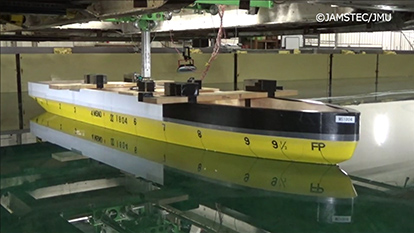
-
- Roll motion test in regular beam wave with ART activated
-
Wave height: 1m, Ship speed: 12kt
Anti-Rolling Tank (ART)
A closed half-filled water tank placed in the ship's superstructure to reduce roll motion. The water in the tank moves left and right acting like a counterweight when the ship rolls in waves.

-
- Roll motion test in irregular beam wave without ART
-
Sea state 5 equivalent, Ship speed: 12kt
Anti-Rolling Tank (ART)
A closed half-filled water tank placed in the ship's superstructure to reduce roll motion. The water in the tank moves left and right acting like a counterweight when the ship rolls in waves.
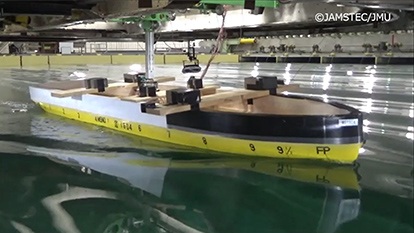
-
- Roll motion test in irregular beam wave with ART activated
-
Sea state 5 equivalent, Ship speed: 12kt
Anti-Rolling Tank (ART)
A closed half-filled water tank placed in the ship's superstructure to reduce roll motion. The water in the tank moves left and right acting like a counterweight when the ship rolls in waves.
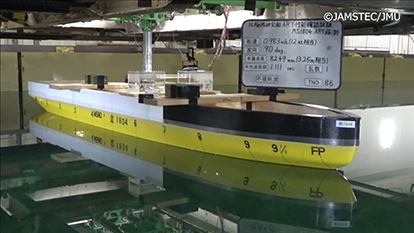
Reproducing all or any part of the contents is prohibited.
